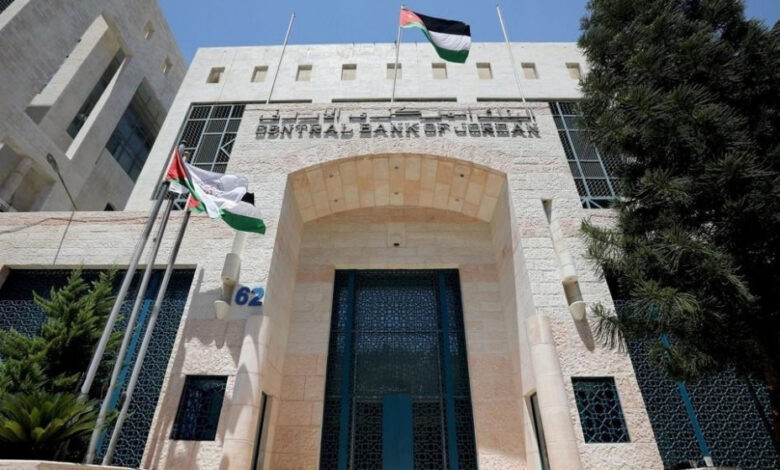
962-Amman
The Governor of the Central Bank, Adel Sharkas, stated that the partnership between the government and the banking sector forms a fundamental pillar in building a more resilient economy, capable of adapting to regional and international changes. It also serves as a key supporter of the Royal vision, which aims to enhance the investment environment, improve Jordan’s competitiveness, and establish its position as a leading financial and banking hub in the region.
During the launch of a banking initiative to allocate 90 million dinars to support the health and education sectors on Sunday, Sharkas noted that the Central Bank expects Jordan’s economic growth to rise to 2.7% in 2025 and continue increasing to 3.5% in the medium term.
He explained that the inflation rate reached 2.2% during the first two months of this year, with expectations that it will stabilize at 2% in 2025, ensuring the stability of purchasing power and the competitiveness of the national economy. Meanwhile, the dollarization rate dropped to 18.4%, indicating growing confidence in the Jordanian dinar and the banking sector, as well as the stability of the macroeconomic environment.
Sharkas highlighted that Jordan’s economy is performing positively, with national exports exceeding expectations by growing 4.1% in 2024 to reach $12.1 billion. Additionally, tourism revenues increased by 22% in the first month of this year compared to the same period in 2024.
Similarly, remittances from Jordanians working abroad rose by 2.8% in 2024, and the Kingdom attracted $1.3 billion in foreign direct investment during the first three quarters of 2024, despite regional instability. This contributed to bolstering foreign reserves and enhancing domestic demand.
Sharkas pointed out that these positive developments resulted in a 2.4% economic growth rate during the first three quarters of 2024, with expectations that growth will remain at this level for the entire year, surpassing the International Monetary Fund’s (IMF) forecast of 2.3%.
He emphasized that the Economic Modernization Vision 2023-2033 serves as a strategic framework for Jordan’s economy, successfully incorporating all reform efforts, including those being implemented under the IMF-supported Extended Fund Facility (EFF). This vision aims to achieve its targets by fostering innovation, competitiveness, and productivity while supporting sustainable development in the long run.
Sharkas reiterated that the monetary and banking policies of the Central Bank of Jordan (CBJ) are a cornerstone for maintaining macroeconomic stability and resilience. He reaffirmed the CBJ’s firm commitment to its primary objective of preserving monetary stability, contributing to financial stability, and fostering a strong and robust banking sector that supports sustainable economic growth.
He also underscored the crucial role of the banking sector in attracting local and foreign savings and channeling them into productive activities, efficiently meeting public budget financing needs while adhering to best banking practices. Furthermore, he highlighted the sector’s leadership at the regional level and its ongoing efforts to enhance the quality of financial services and promote financial inclusion. Banks have also launched various initiatives, including investment funds for startups, promising small and medium-sized enterprises (SMEs), and a real estate development company.
Sharkas noted that Jordanian banks maintain high capital levels, with a capital adequacy ratio of 18% at the end of 2024, significantly exceeding both the CBJ’s minimum requirement of 12% and the Basel III minimum of 10.5%.
Additionally, the Jordanian banking sector enjoys comfortable liquidity levels, with a legal liquidity ratio of approximately 145%, surpassing the CBJ’s minimum requirement of 100%.
Non-performing loans (NPLs) remained relatively low at 5.6%, while the NPL coverage ratio reached 74.8%, reinforcing overall stability and confirming banks’ ability to navigate future economic challenges effectively.
Sharkas expressed confidence in Jordan’s ability to achieve higher economic growth in the future, supported by major strategic projects that the government is committed to implementing over the coming years. These projects align with a comprehensive reform and modernization roadmap extending to 2033, in line with the Economic Modernization Vision.
He concluded:
“Over the past five years—starting from the COVID-19 pandemic and followed by successive external economic shocks—our national economy has demonstrated remarkable resilience and adaptability. It has effectively mitigated the repercussions of these challenges, backed by extensive economic and financial reforms, sound monetary and fiscal policies, and the crucial role of the private sector as a key pillar of economic stability and growth.”


